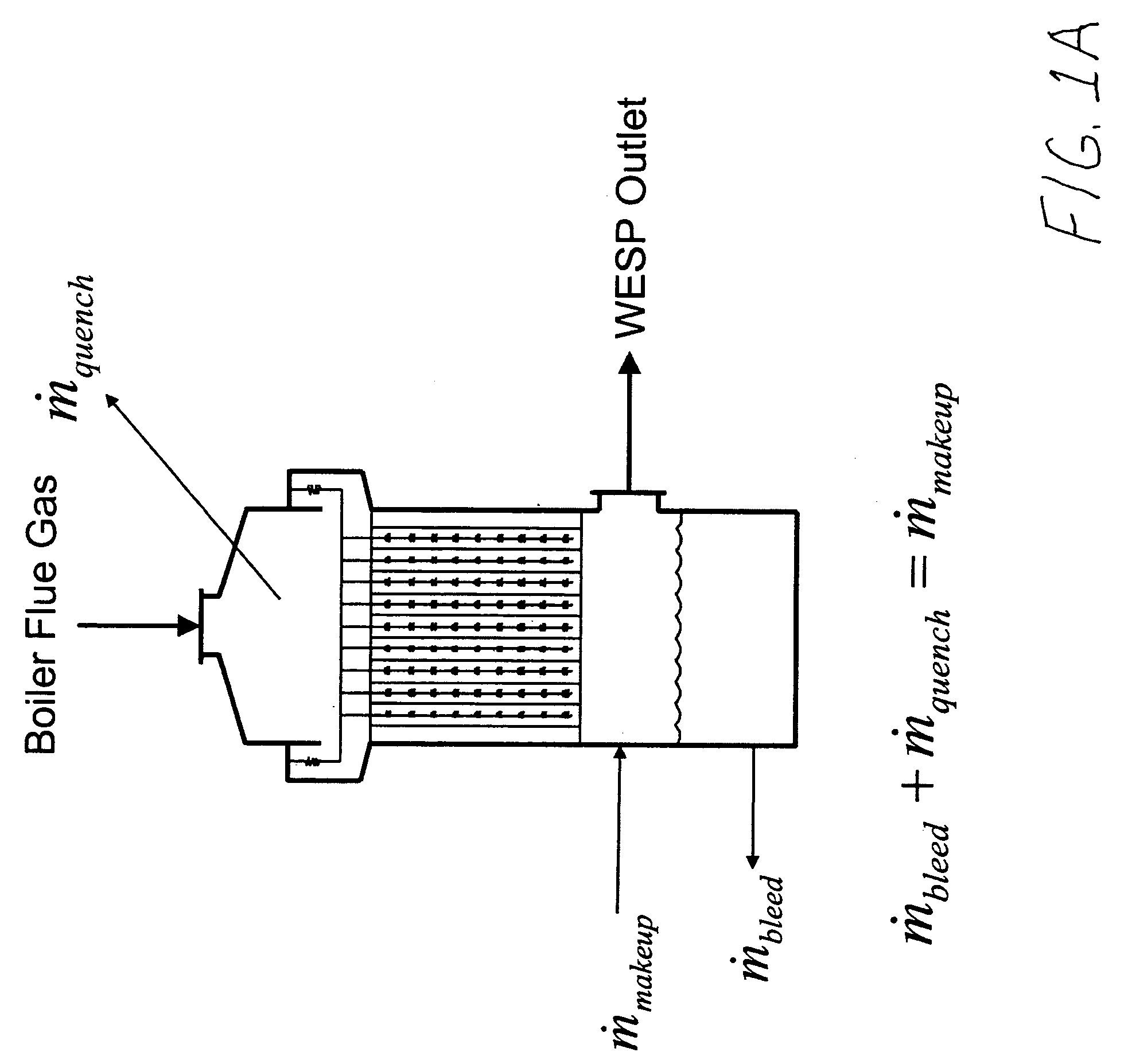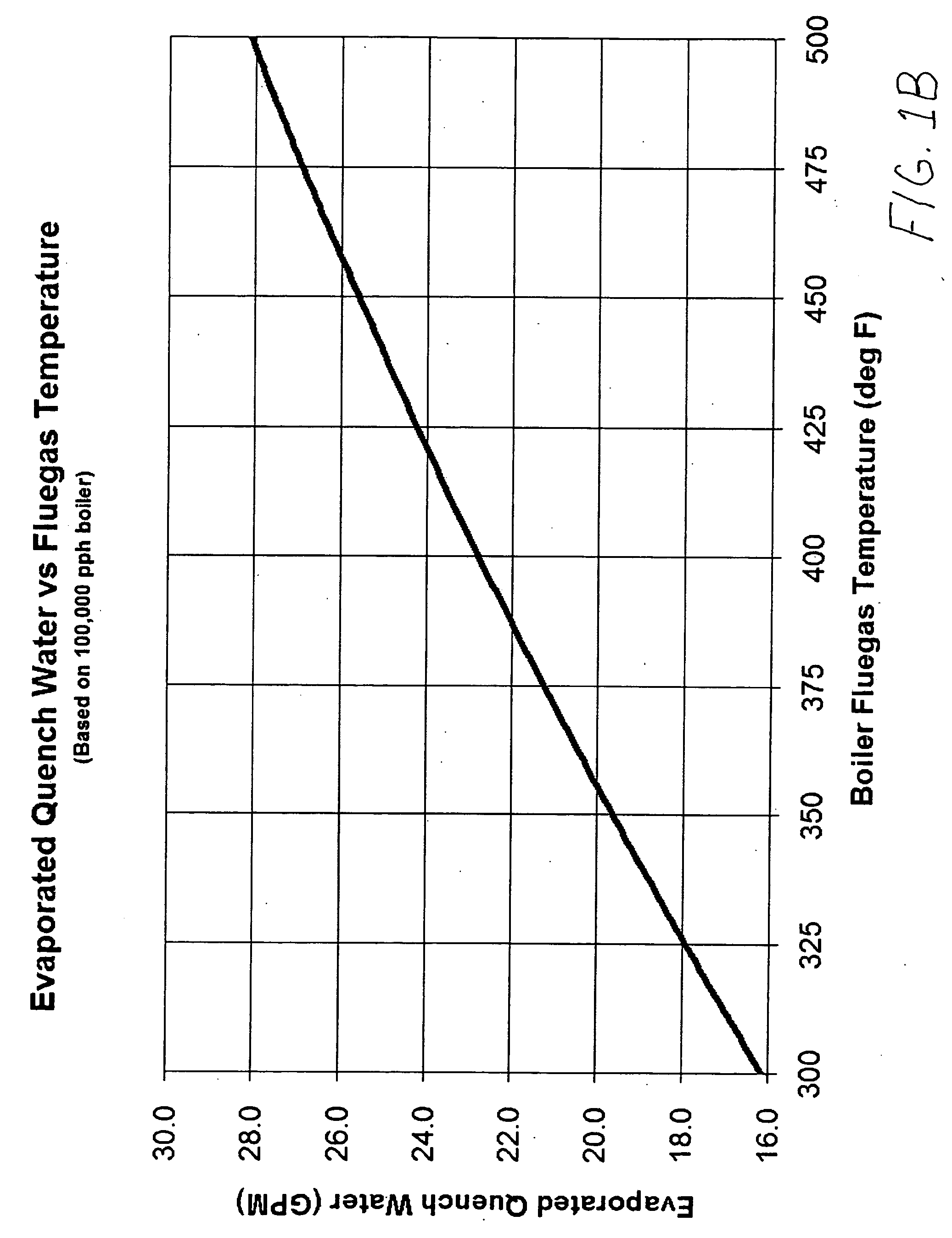Method and apparatus for eliminating or reducing waste effluent from a wet electrostatic precipitator
a technology of wet electrostatic precipitator and waste effluent, which is applied in the direction of electrode cleaning, chemistry apparatus and processes, transportation and packaging, etc., can solve the problems of high cost of operation of centrifuge and evaporator system, the cost of supplying fresh makeup water, and the cost of treating and/or disposing of waste effluent can be substantial, so as to reduce the requirement of quench water makeup, reduce the requirement of fresh makeup water, and reduce the effect of bleed
- Summary
- Abstract
- Description
- Claims
- Application Information
AI Technical Summary
Benefits of technology
Problems solved by technology
Method used
Image
Examples
Embodiment Construction
[0020]The following examples further illustrate the invention but, of course, should not be construed as in any way limiting its scope.
[0021]There is shown in FIG. 1A a schematic diagram and mass balance of water for an embodiment of a wet electrostatic precipitator (WESP). A boiler flue gas, containing particulates and possibly also containing acid gas, enters the WESP and is exposed to a spray of water which quenches the flue gas and assists in the removal of the particulates and scrubbing of the acid gas. As a result, a scrubbed flue gas emerges from the WESP. An amount of the water spray, denoted as mquench, evaporates as it quenches the flue gas and is carried out of the WESP in the scrubbed flue gas. Another amount of the water spray, denoted as mbleed, is discharged from the bottom of the WESP to remove accumulated settled, suspended or dissolved solids. (The water in the bottom of the WESP begins to form a sludge over time as particulate matter accumulates. Salts and chlorid...
PUM
 Login to View More
Login to View More Abstract
Description
Claims
Application Information
 Login to View More
Login to View More - R&D
- Intellectual Property
- Life Sciences
- Materials
- Tech Scout
- Unparalleled Data Quality
- Higher Quality Content
- 60% Fewer Hallucinations
Browse by: Latest US Patents, China's latest patents, Technical Efficacy Thesaurus, Application Domain, Technology Topic, Popular Technical Reports.
© 2025 PatSnap. All rights reserved.Legal|Privacy policy|Modern Slavery Act Transparency Statement|Sitemap|About US| Contact US: help@patsnap.com



